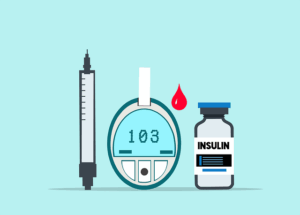Semaglutide, a GLP-1 receptor agonist, effectively treats obesity by mimicking natural hormones to regulate blood sugar and suppress appetite. Dosage starts at 0.25 mg or 0.5 mg weekly and can be titrated up to 1.0 mg under medical supervision based on patient response. Regular monitoring is crucial for optimal results while minimizing side effects, which include GI symptoms and, rarely, pancreatitis, kidney problems, or gallstones. Consistency in weekly dosing is vital for sustained blood levels and maximum efficacy. Long-term therapy offers substantial weight loss, improved metabolic health, and reduced risks of obesity-related conditions when dosed appropriately under professional guidance.
“Discover optimal semaglutide dosing for effective weight loss. This comprehensive guide explores the role of semaglutide in managing obesity, offering insights into initial dosage recommendations, patient-specific adjustments, and long-term therapy considerations. Learn about side effects, administration frequency, and patient education strategies to maximize results. Uncover expert advice on semaglutide dosing, tailored for both patients and healthcare providers.”
Understanding Semaglutide and Its Role in Weight Loss

Semaglutide, a glucagon-like peptide-1 (GLP-1) receptor agonist, has emerged as a powerful tool in the fight against obesity and weight loss. This innovative therapy imitates the natural hormones produced by your body to regulate blood sugar levels after eating. By binding to GLP-1 receptors, semaglutide stimulates feelings of fullness, reduces hunger pangs, and slows gastric emptying, leading to decreased calorie intake and increased satiety.
The dosage of semaglutide for weight loss is carefully tailored to individual needs. Recommended dosages typically start at lower levels and gradually increase over time. Initial doses are often around 0.25 mg or 0.5 mg once weekly, with the goal of reaching a maintenance dose of 1 mg or even higher, depending on patient response and treatment goals. Understanding semaglutide dosing is crucial for optimizing weight loss outcomes while minimizing potential side effects, ensuring patients can navigate their weight management journey effectively.
Semaglutide Dosing: An Overview for Patients

Semaglutide, a glucagon-like peptide-1 (GLP-1) receptor agonist, is primarily known for its role in managing type 2 diabetes. However, it has also gained significant attention as a weight loss aid. When considering semaglutide dosing for weight loss, it’s crucial to understand that the prescribed dosage varies based on individual patient needs and medical history. Typically, treatment begins with a lower dose, which is then adjusted upwards over time under medical supervision.
The standard starting dose of semaglutide for weight loss is 0.25 mg once weekly, administered subcutaneously. This initial dose may be further tailored based on the patient’s response, with the maximum recommended dosage reaching up to 1.0 mg per week. Regular monitoring during treatment is essential to ensure optimal results while minimising potential side effects. Patients should follow their healthcare provider’s guidance and adhere to the prescribed semaglutide dosing regimen for effective and safe weight management.
Initial Dosage Recommendations for Obesity Treatment

When using semaglutide for obesity treatment, initial dosage recommendations typically start with a low dose to assess individual tolerance and response. The starting dose is often 0.25 mg once weekly, which allows patients and healthcare providers to monitor any adverse effects while providing a basis for titration. As patient compliance and weight loss progress, the dosage can be gradually increased up to the maximum recommended dose of 1.0 mg per week. This gradual approach ensures that both the body and mind adjust to the medication’s effects, enhancing overall adherence to the treatment plan.
The flexibility in semaglutide dosing enables a personalized experience for each patient. Healthcare professionals carefully consider factors like age, medical history, and current weight to determine the optimal starting dose, aiming for a safe and effective weight loss journey.
Adjusting Dosage Based on Patient Response

The recommended dosage of semaglutide for weight loss starts at 0.25 mg weekly and can be adjusted based on patient response. Some patients may require a higher dose, while others might experience sufficient weight loss at lower doses. It’s crucial to monitor individual responses carefully, as the treatment’s effectiveness can vary. Healthcare providers should assess factors like body mass index (BMI), waist circumference, and overall health to make informed decisions about dosing adjustments.
If patients show promising results or require more significant weight management, dosages can be increased gradually, typically in 0.25 mg increments every 4 weeks. This gradual approach allows for better control and minimizes potential side effects associated with semaglutide therapy. Regular follow-ups are essential to ensure optimal dosing and patient safety throughout the treatment journey.
Common Side Effects and Their Management

Semaglutide, a glucagon-like peptide-1 (GLP-1) receptor agonist, is commonly used for weight loss with recommended dosages varying based on individual patient needs. While many people tolerate semaglutide well, it’s not without side effects. Common adverse events include nausea, vomiting, diarrhea, and constipation—often referred to as gastrointestinal (GI) symptoms. These can be managed through dietary adjustments, such as increasing fiber intake and staying hydrated. Additionally, starting at a lower dosage and gradually increasing under medical supervision can help minimize these side effects.
Other less frequent but potentially serious side effects of semaglutide dosing include pancreatitis, kidney problems, and gallstones. Monitoring by healthcare providers is crucial to managing these risks. Regular check-ups and blood tests can help detect any adverse reactions early on. Patients should also be educated about recognizing warning signs and promptly reporting them to their healthcare team.
Optimizing Results: Frequency of Administration

Optimizing results with semaglutide requires a consistent approach to dosing, understanding that frequency plays a significant role in its effectiveness for weight loss. Typically, semaglutide is administered once weekly, offering a convenient and potentially more effective strategy than daily injections. This weekly schedule allows for sustained blood levels, ensuring the medication’s actions on glucose regulation and appetite control are fully realized over time.
The key to maximizing benefits lies in adhering strictly to this frequency. Skipping doses or altering the administration timeline can disrupt the drug’s action, impacting overall weight loss progress. Thus, patients should strive for a consistent routine, incorporating semaglutide into their weekly self-care rituals, much like scheduling regular meals or exercise sessions to support their health and wellness journey.
Long-term Semaglutide Therapy: Considerations and Benefits

Long-term Semaglutide Therapy offers a range of benefits for individuals striving for sustainable weight loss. The key considerations revolve around personalized dosing and individual responses. Semaglutide, an injectable medication, works by mimicking a natural hormone that regulates hunger and blood sugar levels. Typically, the dosage starts low and gradually increases over time to optimize effectiveness while minimizing side effects. This tailored approach is crucial as every person’s body reacts differently to semaglutide dosing.
Benefits of prolonged therapy include significant weight reduction, improved metabolic health, and reduced risks associated with obesity-related conditions such as type 2 diabetes and cardiovascular diseases. Regular monitoring of blood sugar levels and adjustments in dosage by a healthcare professional ensure safety and maximize the therapeutic benefits of semaglutide.
Patient Education and Support for Effective Weight Loss

Effective weight loss with semaglutide requires patient education and support. Understanding the recommended semaglutide dosing is crucial for achieving desired results. Patients should be informed about the medication’s action, how it works to reduce appetite and promote satiety, and the importance of adhering to a balanced diet and regular physical activity. Healthcare providers play a vital role in educating patients, offering guidance on proper semaglutide administration, and addressing any concerns or side effects.
Regular follow-ups allow for continuous support, monitoring progress, and making adjustments to the treatment plan if needed. Patients should be encouraged to track their meals, exercise routines, and medication adherence to stay motivated and ensure the safety of their weight loss journey.
